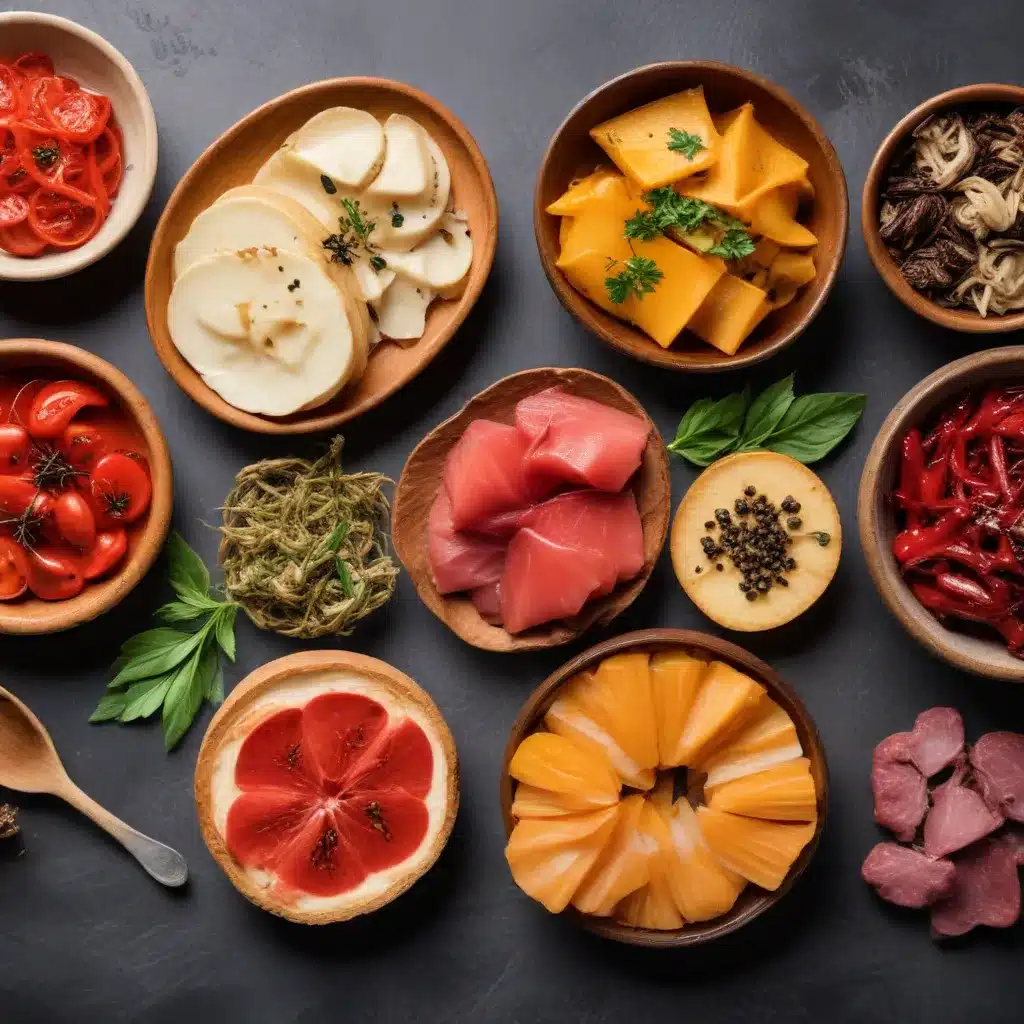
As a culinary expert with a deep passion for California cuisine, I’ve had the privilege of exploring the intricate world of flavors, textures, and aromas that make our gastronomic landscape so vibrant and captivating. Today, I invite you to embark on a sensory odyssey with me as we delve into the captivating realm of umami – the fifth taste that has long been revered for its ability to elevate and transform our dining experiences.
Unveiling the Umami Enigma
Umami, often described as the savory, meaty taste, has been a subject of fascination for chefs, food scientists, and culinary enthusiasts alike. This elusive flavor profile has been a hallmark of many beloved dishes, from the rich, earthy notes of a perfectly seared steak to the comforting, broth-like essence of a hearty soup. But what exactly is umami, and how does it interact with our other taste receptors to create the harmonious flavors we crave?
The key to understanding umami lies in the science of taste. Umami is primarily the result of the presence of glutamate, a naturally occurring amino acid found in a wide range of ingredients, from aged cheeses and fermented sauces to mushrooms and tomatoes. When these umami-rich foods are combined with other complementary flavors, they create a synergistic effect, amplifying the overall taste experience.
Mastering the Art of Umami Pairing
As a California cuisine enthusiast, I’ve long been fascinated by the art of flavor pairing, and umami has been a central focus of my culinary explorations. By understanding the interplay of umami with other taste profiles, chefs and home cooks can unlock a world of culinary possibilities.
One of the hallmarks of successful umami pairing is the concept of contrast and balance. Consider the classic combination of grilled steak and roasted mushrooms – the savory, almost meaty notes of the mushrooms perfectly complement the richness of the beef, creating a harmonious and satisfying flavor profile. Similarly, the umami-rich, salty essence of soy sauce can elevate the sweetness of a glazed salmon or the freshness of a vegetable stir-fry.
But umami isn’t just about savory flavors – it can also enhance the sweetness and acidity of certain ingredients. The umami-packed punch of aged Parmesan cheese, for instance, can amplify the natural sweetness of ripe tomatoes in a Caprese salad. Likewise, the umami-rich fermentation of miso paste can lend depth and complexity to a simple vegetable broth or salad dressing.
Exploring the Umami Spectrum
As I’ve delved deeper into the world of umami, I’ve come to appreciate the vast spectrum of savory delights it encompasses. From the bold, meaty notes of a hearty beef stew to the delicate, briny essence of a freshly shucked oyster, umami can manifest itself in a multitude of forms, each with its own unique character and appeal.
One captivating example is the umami-rich world of fermented foods. Whether it’s the funky, complex flavors of aged cheeses, the tangy, probiotic-packed punch of kimchi, or the mellow, umami-forward essence of soy sauce, these fermented delicacies have the power to transform even the simplest dishes into culinary masterpieces.
Likewise, the umami-rich realm of mushrooms has long been a source of inspiration for California cuisine enthusiasts. From the earthy, almost-meaty portobello to the delicate, forest-like shiitake, these fungi offer a treasure trove of umami-packed flavors that can elevate a wide range of dishes, from hearty stews to delicate pasta creations.
Elevating the Umami Experience
As a culinary expert, I’ve had the privilege of witnessing the transformative power of umami in the kitchens of California’s finest restaurants. I’ve seen chefs harness the savory magic of ingredients like aged soy sauce, roasted tomato paste, and fermented black garlic to create dishes that are not just delicious, but truly revelatory.
One such example is the umami-packed “mushroom dashi” I encountered at a Michelin-starred restaurant in San Francisco. The chefs had meticulously crafted a deeply savory, almost-broth-like elixir by simmering an array of mushrooms, kombu, and dried fish, resulting in a umami-forward liquid that served as the foundation for a series of inventive dishes. When paired with delicate, perfectly cooked seafood or tender, slow-braised meats, this umami-rich dashi elevated the entire dining experience, creating a symphony of flavors that lingered long after the last bite.
Unlocking the Umami Potential
As we wrap up our exploration of the umami enigma, I’m reminded of the endless possibilities that lie within this captivating flavor profile. Whether you’re a seasoned home cook or a curious food enthusiast, unlocking the secrets of umami can open the door to a whole new world of culinary adventures.
So, I encourage you to experiment, to explore, and to embrace the umami-rich ingredients that abound in California’s vibrant food scene. Discover the depth and complexity of fermented sauces, the earthy allure of mushrooms, and the savory brilliance of aged cheeses. Combine these umami-packed components with fresh, local produce and the bold, fruit-forward wines that have made California a global culinary destination.
By mastering the art of umami pairing and embracing the full spectrum of savory delights, you’ll not only elevate your culinary skills but also unlock a new level of dining satisfaction that will leave your taste buds utterly enchanted. So, let’s raise a glass to the power of umami, and embark on a journey of sensory exploration that will forever change the way you experience food.

